-
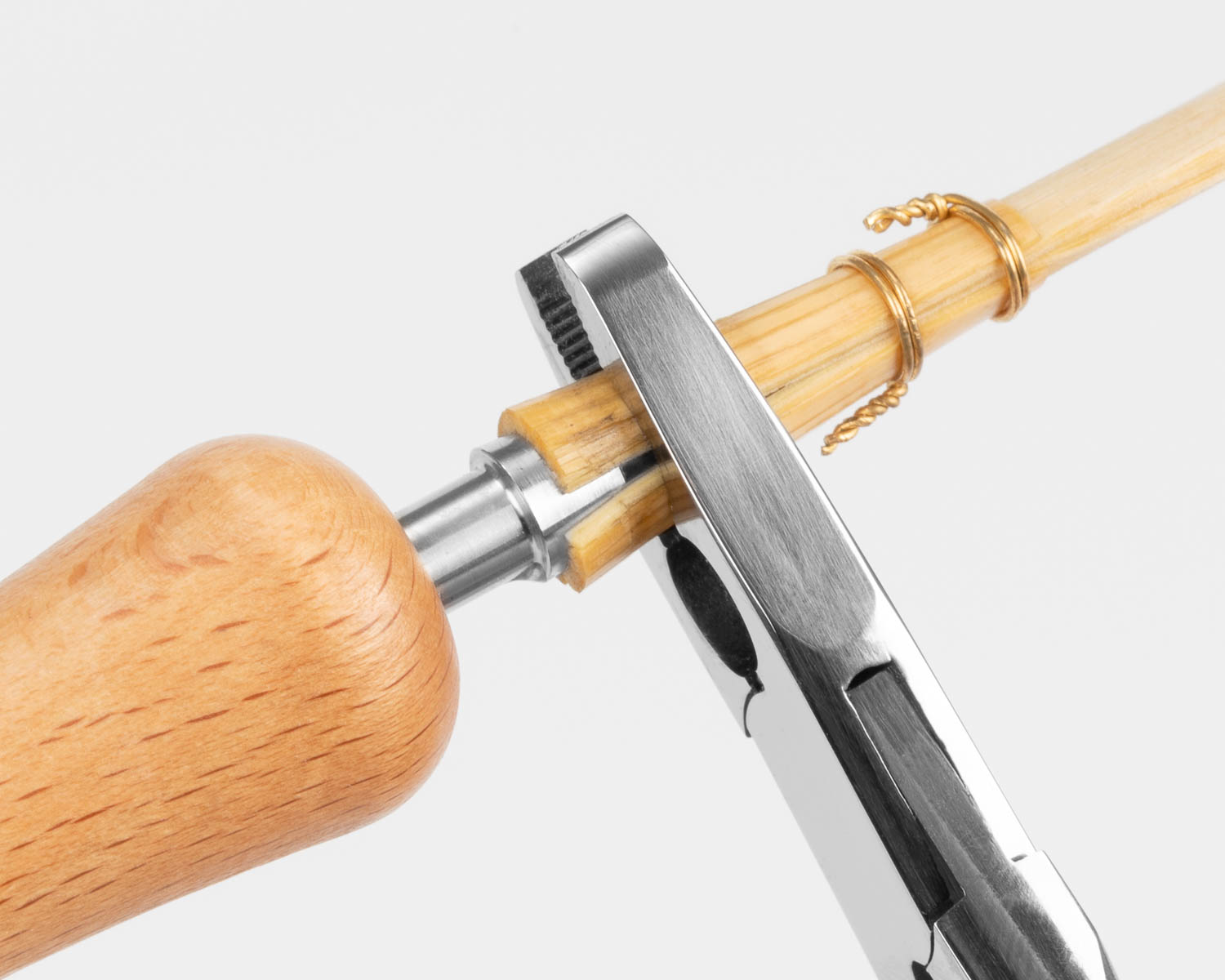
-
After putting the first two wires on, David uses the Anti-Crack Mandrel to form the back of the tube.
-
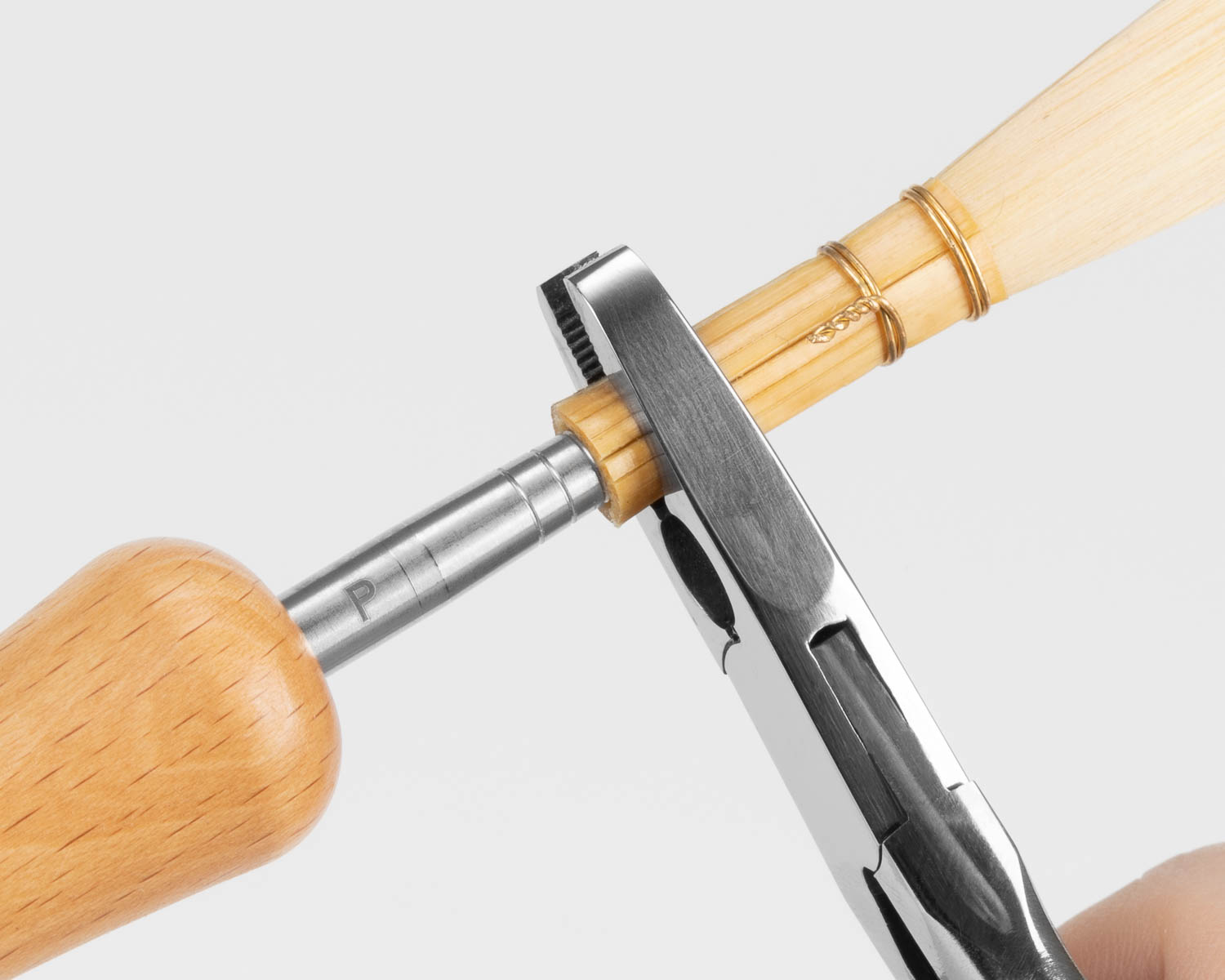
-
Using the Forming Mandrel PLUS he then forms the rest of the tube and places his wires.
-
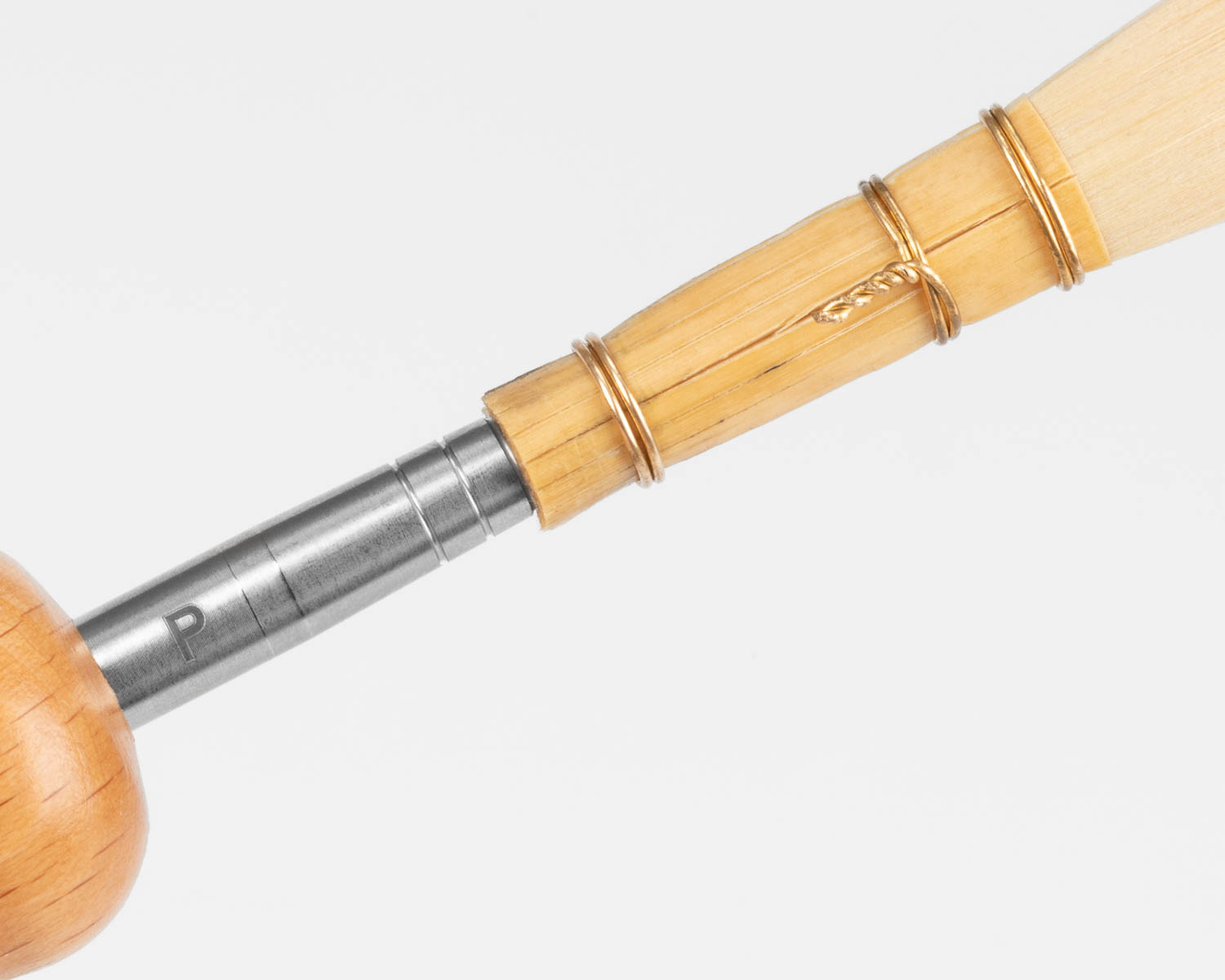
-
His wires are placed at 1 mm behind the collar, then 5 mm below that. The bottom wire is placed 3 mm up from the back of the tube.
For longer tubes David recommends using a fourth wire.
-
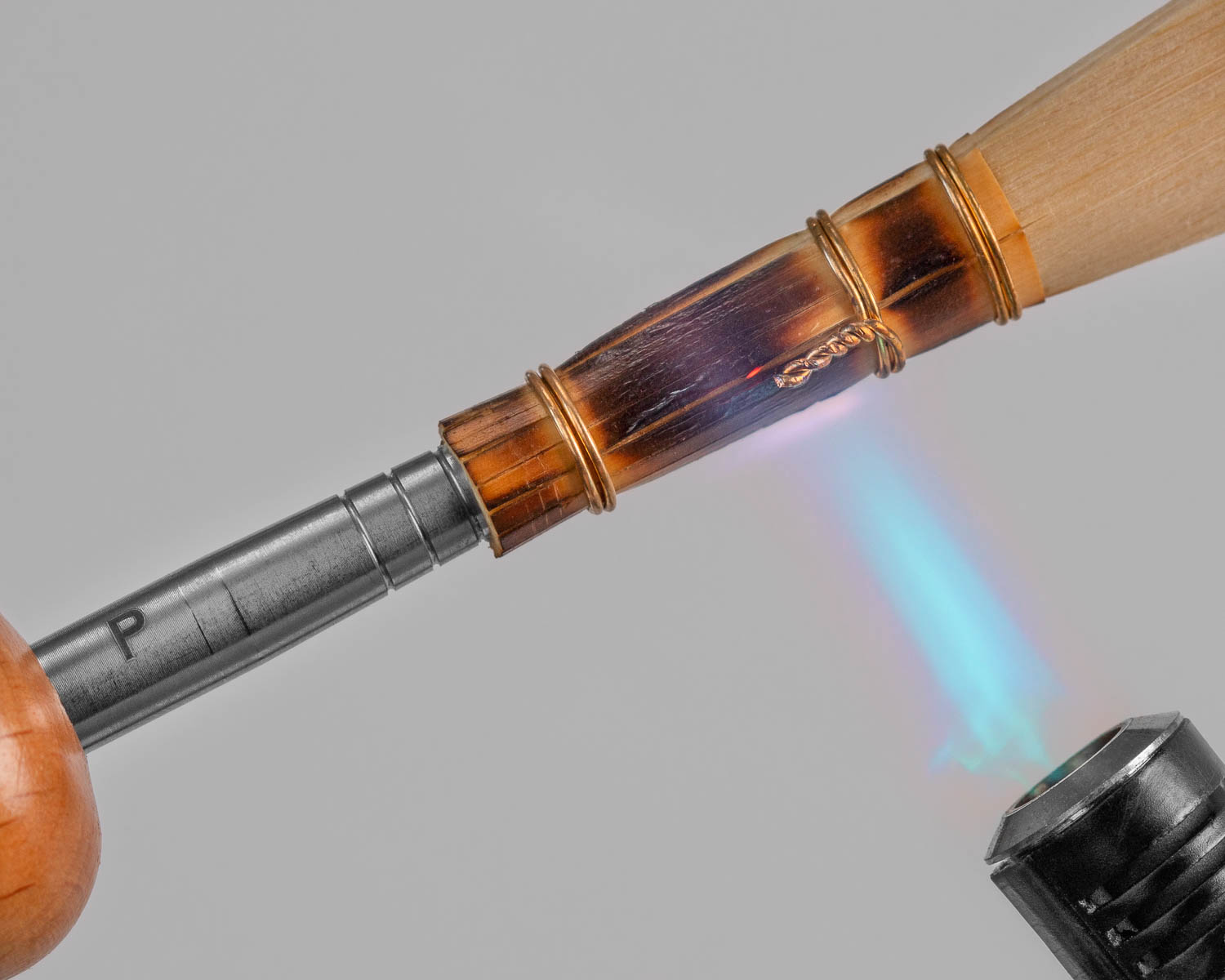
-
After placing the wires he then uses a torch and lightly burns the tube to both dry out and help form the tube.
This helps stabilize the tube and keep it from collapsing.
-
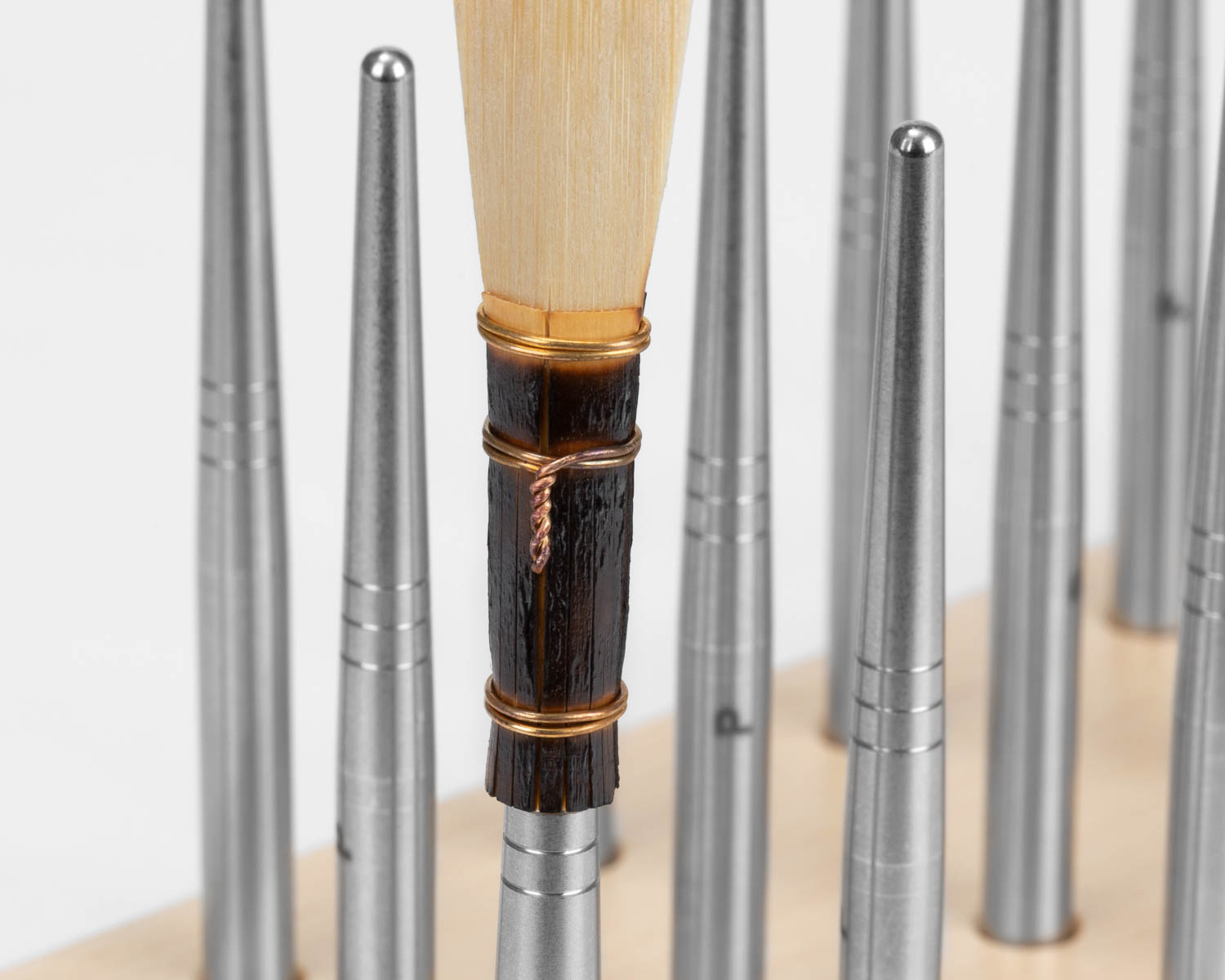
-
The reeds are then left on the drying rack for about a week before the blade is clipped to a length of 27.5 - 28 mm.
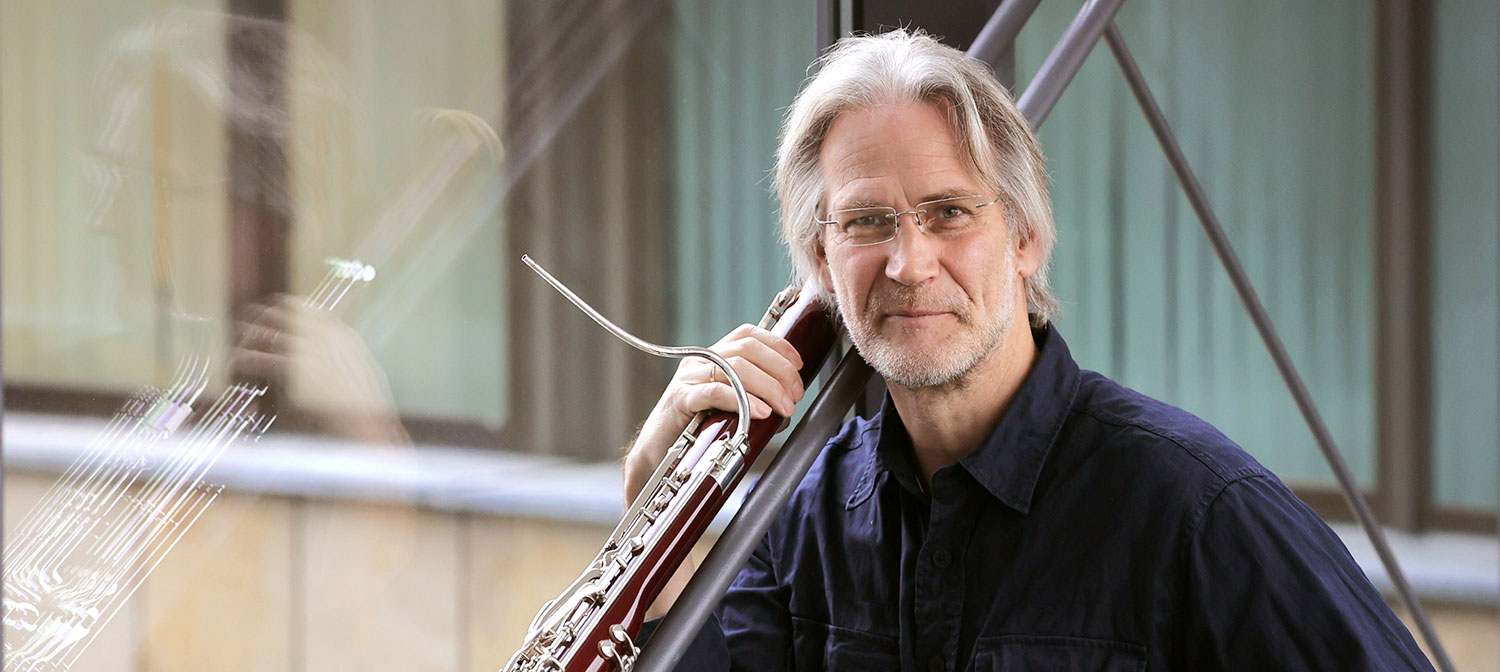
Prof. David Petersen
Principal Bassoonist of the Leipzig Gewandhaus Orchestra
Professor at the Hochschule für Musik und Theater Rostock
David Petersen received his first piano lessons at the age of eight. He completed his bassoon studies at the special school for music in Dresden, then at the music academies in Dresden, Berlin, and Hanover with Bernhard Rose, Holger Straube and Klaus Thunemann. Since 1992 he has been principal bassoonist of the Leipzig Gewandhaus Orchestra.
The bassoonist is a founding member of the Gewandhaus Octet, with whom he has since performed in Germany, Spain, Austria, Japan and Taiwan. He has been a member of the Bayreuth Festival Orchestra since summer 2009.
David Petersen has led bassoon classes at the Frankfurt and Mainz universities since 2002 and since 2021 is the head of the woodwind department and professor for bassoon at the hmt Rostock. He is also a bassoon teacher at the "Latina" music high school in Halle/S and regularly gives courses in Germany, Japan, Taiwan, the USA and Finland.
David's Process
David Petersen only uses cane that has been density tested after splitting with results in the 60 - 62 range. During the entire reed making process he soaks his cane only in distilled water.
He then pre-gouges his cane before gouging his cane with a tapered eccentric gouge. His cane ends up about 1.2 mm thick at the end of the shaft and 1.05 mm thick in the center. After gouging, David lightly sands the underside of the cane, as this is the last chance to smooth out this part of the cane.
David uses his own custom shape (coming soon), clips the tube length to 26 mm then profiles the cane to his personalized settings that are very close to a finished reed.
This is where the final finishing process starts. David does the rest of his work by hand using a combination of knives, scalpels, files, sand paper, and silicone polishers.
David's Tips
- If the reed is too heavy and you find yourself clamping down with your lips, lighten up the chanels to either side of the spine. This will open up the reed and allow it to vibrate more.
- If the reed is too light, lightly scrape just off-center on both sides at the tip and no further back than 2 mm to create what David calls "rabbit's ears." This will make the reed seem slightly heavier again.
- Most importantly, be slow about working on each reed. Take your time breaking the reed in and do not scrape too much at the beginning. This will allow the reeds to last much longer.
-
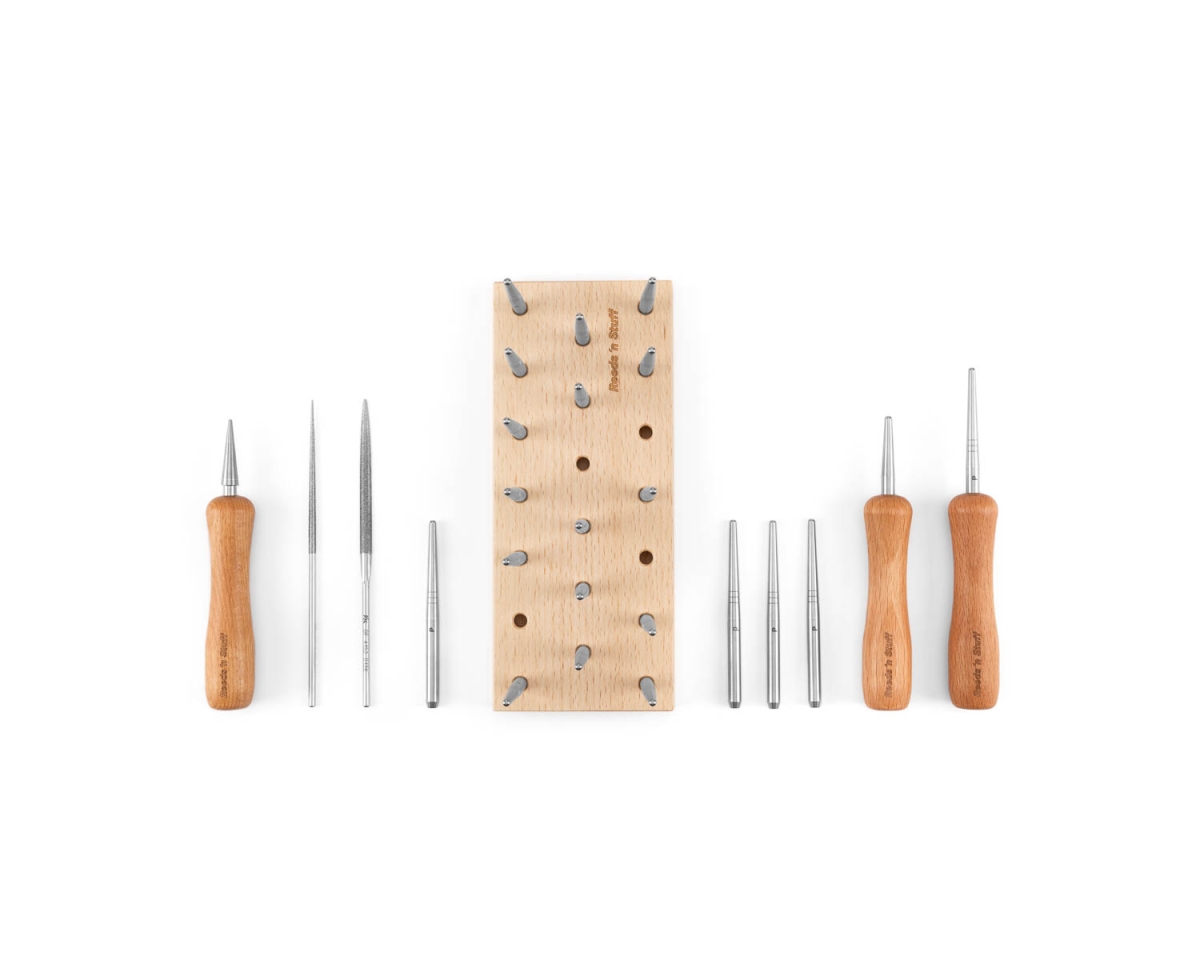
-
Reed Making Set PETERSEN
Buy
